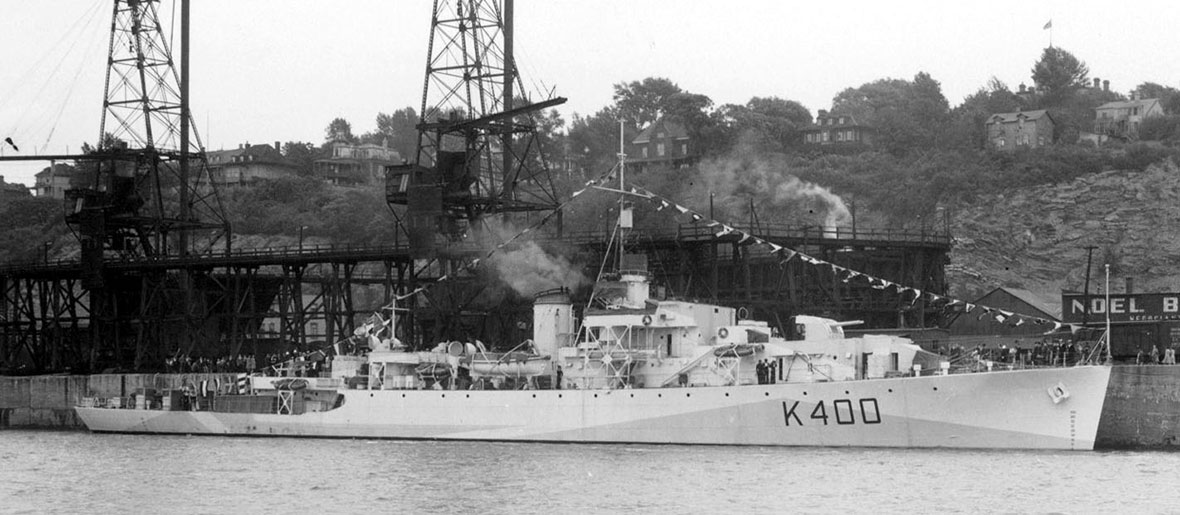HMCS Levis
There have been 2 vessels named Levis in the Royal Canadian Navy.
HMCS Levis (1st of the name) (K115)
Commissioned on May 16, 1941, at Québec City, Quebec, the Flower Class corvette Levis arrived at Halifax, Nova Scotia on May 29, worked-up there, and joined Newfoundland Escort Force in June 1941.
After one round trip to Iceland, she left St. John’s, Newfoundland, on September 13 as escort to convoy SC.44, but was torpedoed by German submarine U-74 on September 19, 120 miles east of Cape Farewell, Greenland. Although 18 of her crew perished, she remained afloat for several hours, during which time most of her company was rescued by her sister ships HMCS Mayflower and HMCS Agassiz.
- Displacement: 970 tons
- Dimensions: 63.5 m x 10.1 m x 2.9 m
- Speed: 16 knots
- Crew: 85
HMCS Levis (2nd of the name) (K400)
Far more habitable ships than the smaller corvettes, the frigates of the River Class were also faster and had twice the endurance of the corvette. The Royal Navy frigates were named for rivers and hence known as the River Class; the Royal Canadian Navy ships were named for towns and cities.
Commissioned at Québec City on July 21, 1944, the River Class frigate Levis arrived in Bermuda at the end of August for work-ups, and a month later left for Halifax to join the newly formed Escort Group 27. She spent the balance of the war on patrol and escort duty with the group, and on June 4 commenced refit at Lunenburg, Nova Scotia. This work was completed on November 26 and she sailed the following month for Esquimalt, British Columbia, arriving there on January 30, 1946.
Paid off on February 15 to reserve, she was sold in 1947 and her hull expended the following year as part of a breakwater at Oyster Bay, British Columbia.
- Displacement: 1,445 tons
- Dimensions: 91.9 m x 11.1 m x 2.7 m
- Speed: 19 knots
- Crew: 141
Battle honours
- Atlantic 1941, 1944-1945
- Gulf of St. Lawrence 1944

